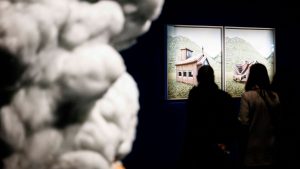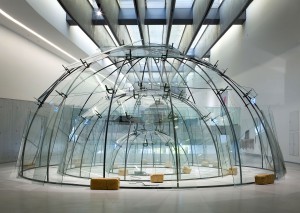opening hours
Monday closed
Tuesday to Sunday 11 am – 7 pm
Sunday 24 December 11 am > 4 pm
Monday 25 December closed
Tuesday 31 December 11 am > 4 pm
Wednesday 1 January 11 am > 7 pm
Monday 6 January 11 am > 8 pm
- full price € 15 at the box office - € 14 online
- reduced price € 12 at the box office - € 11 online
for young people aged between 18 and 25 (not yet turned 25); for groups of 15 people or more; La Galleria Nazionale, Museo Ebraico di Roma ticket holders; upon presentation of ID card or badge: Accademia Costume & Moda, Accademia Fotografica, Biblioteche di Roma, Centro Sperimentale di Cinematografia, Enel (for badge holder and accompanying person), FAI – Fondo Ambiente Italiano, Feltrinelli, Gruppo FS, IN/ARCH – Istituto Nazionale di Architettura, Sapienza Università di Roma, LAZIOcrea, Palazzo delle Esposizioni, Amici di Palazzo Strozzi, Accademia Nazionale di Santa Cecilia, Scuola Internazionale di Comics, Teatro Olimpico, Teatro dell’Opera di Roma, Teatro di Roma, Università degli Studi di Roma Tor Vergata, Youthcard; upon presenting at the ticket office a Frecciarossa or a Frecciargento ticket to Rome purchased between 27 November 2024 and 20 April 2025
- open € 18
valid for one year from the date of purchase
- free
minors under 18 years of age; disabled people requiring companion; EU Disability Card holders and accompanying person; MiC employees; myMAXXI cardholders; registered journalists with a valid ID card; European Union tour guides and tour guides, licensed (ref. Circular n.20/2016 DG-Museums); 1 teacher for every 10 students; AMACI members; CIMAM – International Committee for Museums and Collections of Modern Art members; ICOM members; journalists (who can prove their business activity); European Union students and university researchers in art history and architecture, public fine arts academies (AFAM registered) students and Temple University Rome Campus students from Tuesday to Friday (excluding holidays); IED – Istituto Europeo di Design professors, NABA – Nuova Accademia di Belle Arti professors, RUFA – Rome University of Fine Arts professors; upon presentation of ID card or badge: Collezione Peggy Guggenheim a Venezia, Castello di Rivoli Museo d’Arte Contemporanea, Sotheby’s Preferred, MEP – Maison Européenne de la Photographie; on your birthday presenting an identity document
Collection
MAXXI’s Collection of Art and Architecture represents the founding element of the museum and defines its identity. Since October 2015, it has been on display with different arrangements of works.

Contacts
To receive further information, book and purchase activities please write to
edumaxxi@fondazionemaxxi.it or call +393386419518, from Monday to Friday, from 9.30 am to 1 pm.
Avviso
Si comunica che eventuali attività educative organizzate da soggetti esterni al MAXXI, all’interno del museo o sul piazzale, vanno preventivamente concordate con il Dipartimento Educazione.
































Learn to read the space that surrounds us to imagine new shared configurations.
>> download the conferences papers
An international conference on education to the built environment, designed for architecture students and architects, teachers from schools of all levels and types, museum educators and professionals from the culture and education sectors.
Architectural education is one of the areas in which MAXXI’s education department has acquired in-depth experience, starting out with the construction of the extraordinary building by Zaha Hadid itself and thanks to activities and experimental projects involving the construction site and modern and contemporary architecture in general. The objective of these activities has been to render the architectural language familiar to a non-specialist public.
This conference – the first edition of a series with the second scheduled for the spring of 2020 – was conceived with the aim of offering an overview of the best international practices within the ambit of architectural education, in order to understand the architectural landscape that surrounds us, raise awareness of our everyday existence and contribute to actively defining its qualitative and relational characteristics.
Through direct contact with the professional figures responsible for innovative projects for diverse publics, providing examples from which to draw inspiration, the conference proved to be an invaluable opportunity for debate regarding educational approaches, design methodologies and practical tools for “helping us to understand the spatial essence of architecture, so that everyone is capable of truly seeing the environments in which they spend much of their existence.”